Original Owner: A young soldier buys his dream car in a war zone
Welcome to Original Owner, a new series showcasing—you guessed it—people who bought a classic car new and still own it. The cars don’t need to be factory-original, just still in the hands of the first owner and still getting driven. —Ed.
In the summer of 1969, Ray Eugenio was 19 and nearing the end of his army service in Vietnam. He was stationed at the 29th Evacuation Hospital on an airbase in Bình Thuy, near the city of Can Tho. Like other GIs, he was focused on getting home, in his case to Brooklyn. His thoughts often turned to cars. He planned to buy a new muscle car for life after Vietnam but didn’t have to wait, as he could order it through the base’s post exchange (PX).
Although he had initially planned to buy a Mustang, Ray ultimately chose a 1970 Plymouth ’Cuda, the performance version of the third-generation Barracuda, introduced for 1970 and known within Chrysler as the E-body.
1970 Plymouth ’Cuda: Factory basics
In typical Mopar fashion, the car came built for speed from the factory. For $3164, just $300 over a base Barracuda, the ’70 ’Cuda delivered a huge performance upgrade. Standard equipment included a 335-hp, 383-cubic-inch big-block V-8 (the standard Barracuda featured a 318), a four-barrel carburetor, dual exhausts with tailpipe tips poking through the rear valance, heavy-duty suspension with front and rear antiroll bars, larger drum brakes, a dual-scoop hood, and front “road lamps.”
For extra cost, the buyer could step up to the optional 440 four-barrel (375 hp), the 440 six-barrel (390 hp), or the mighty 426 Hemi (425 hp). Also on the list as a no-charge option, and featured prominently in the 1970 Barracuda brochure, was the 340-cube, four-barrel small-block that debuted for 1968. While some at the time likely viewed the 340 as a downgrade from the 383, it was anything but.
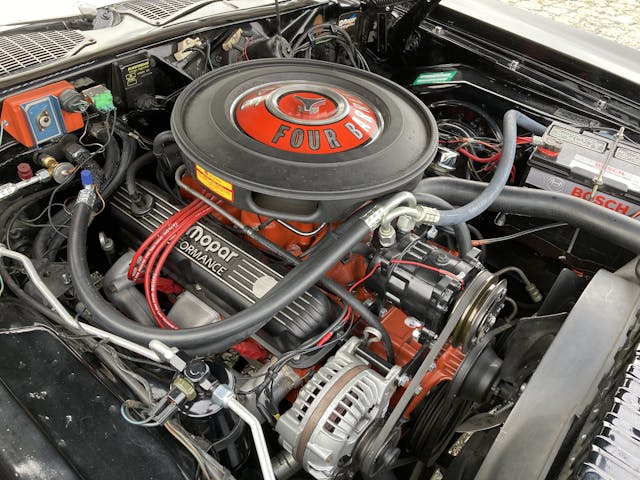
A member of Chrysler’s LA-series family of V-8s, the 340 was built only as a high-performance engine. It featured a forged crankshaft, a double-roller timing chain, a 10.5:1 compression ratio, a hot cam, 2.02-inch intake valves, a dual-breaker distributor, and a Carter AVS 650-cubic-feet-per-minute four-barrel carburetor with a no-snorkel air cleaner. That list helped produce a factory rating of 275 hp. Car Life magazine ran an automatic-transmission 1970 340 ’Cuda like Ray’s car down the quarter-mile in 15 seconds flat at 94 mph.
Of the 55,499 Barracudas produced for 1970, 18,880 were ’Cuda hardtops. About one third of those got the 340 four-barrel, making it the most popular engine. (There were also 2724 AAR ’Cuda hardtops, which used the 340 six-barrel engine exclusively.)
Ray Eugenio’s car

A long option list enticed ’Cuda buyers with 12 exterior colors and a slew of upgrades focused on performance, comfort, and cosmetics. Ray ordered his car in Black Velvet paint. On the performance side, he chose the TorqueFlite automatic over the standard three-speed stick and paired the standard 3.23:1 rear-axle ratio with the optional Sure Grip differential.
Because he intended to daily his ’Cuda, Ray also chose power steering (but not power brakes), air-conditioning, tinted glass, a floor console with Slap Stik shifter, a rear-window defogger, an AM solid-state radio, dual color-keyed racing mirrors, body side moldings, and the lighting package. His out-the-door cash price was $4050.83.
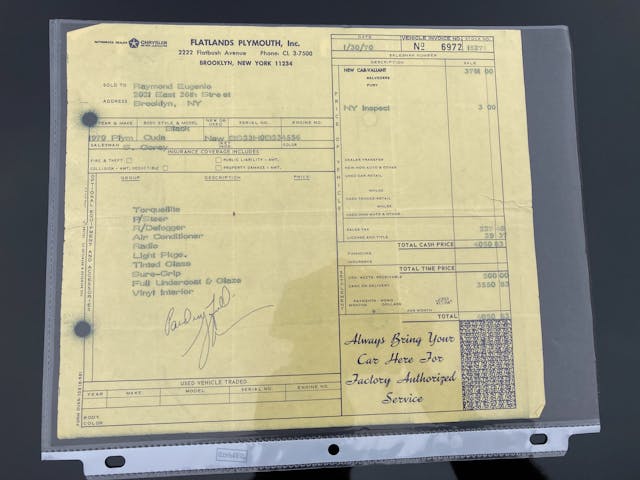
The Plymouth hasn’t been Ray’s daily in many years, but as he’s retired and living in Florida, he still drives it frequently. The ’Cuda also earned its 15 minutes of fame (12 minutes and 27 seconds, to be precise) by starring in a video on the “Muscle Car Campy” YouTube channel. (MCC is run by Jim Campisano, former editor of the magazines MuscleCars, Super Chevy, and Muscle Mustangs & Fast Fords.
Ray’s ’Cuda memories
Hagerty: When did you order the car through the base’s PX?
Ray Eugenio: September 1969, and I was going home that December. There was a catalog, but no cars, obviously. I picked out the car I wanted, the color and options, and the salesperson wrote it up.
Hagerty: How long did you have to wait to take deliver?
RE: They told me it wouldn’t be built until I left Vietnamese airspace. When I got my orders, I brought them to the PX, and the salesman said they’d put the order through on the day I left. That was December 15, 1969. I picked the car up at Flatlands Plymouth in Brooklyn on January 30, 1970. I have the bill of sale from when it was delivered, and I still have the original window sticker and build sheet.
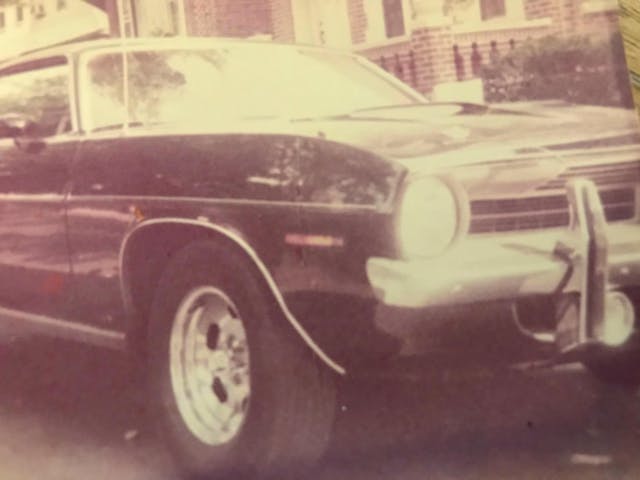
Hagerty: The E-body Barracuda was brand new in fall of ’69. Did you know right away that you wanted one?
RE: My original choice was a Mustang Mach 1. When I got drafted, I had a Thunderbird with the 390. I was familiar with that engine, so I wanted a Mustang with it. They told me the 390 had been discontinued for the Mustang and mentioned the new 351 Cleveland. But I didn’t want an engine I knew nothing about.
I also looked at the Mustang Boss 302, but you couldn’t get air-conditioning with it. So, I looked at other cars—Chevelle SS, Oldsmobile 4-4-2, Buick Gran Sport, and Camaro. Then I saw the Barracuda and thought, That’s what I want.
Hagerty: Have you ever considered selling?
RE: By the late 1980s, the driver’s seat was starting to rip, and there were some [bodywork] dings, so I thought maybe I should get something new. I put a for-sale sign in the window, asking $5000. The phone didn’t stop ringing, so I figured I’d made a mistake and decided to keep it.
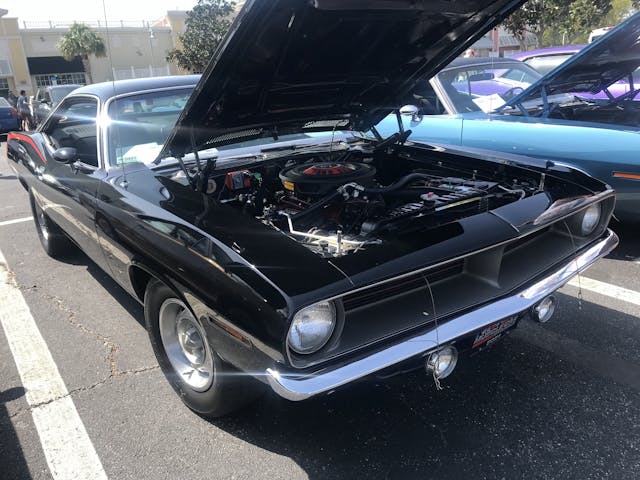
Hagerty: Have you made any changes or modifications?
RE: I had it repainted in 1996 in the original color. The red “hockey stick” stripes were not available with black paint when the car was new, so I added them. That’s when I had new carpeting put in and reupholstered the front seats.
The rest of the interior is original. I upgraded to Mopar electronic ignition and changed the Carter carburetor to a Holley. The exhaust has different mufflers, and I added Mopar Performance valve covers and of course radial tires.
Hagerty: Tell us about the Rallye wheels.
RE: When the car was delivered, it had black steel wheels with dog-dish hubcaps and whitewall tires. It was supposed to come standard with Rallye wheels and white-letter tires, but I was told those had been made optional after I ordered the car. I freaked. Nobody told me, or I would have ordered them.
They said they could add them for about $250. I said, “I’m not paying that, and I’m not driving this car with whitewall tires. You’ve got to reverse them as blackwalls and balance the wheels.” So they did that.
I drove around with the steel wheels for a few months. Then my girlfriend was driving it, because my job came with a company car. That April, for my birthday, she surprised me by having Mr. Gasket chrome slotted wheels mounted, and they stayed on the car until I had it repainted. I picked up a set of Rallye rims, but with the 1972 center caps, because I liked those better.

Hagerty: How often do you drive it?
RE: Almost every weekend. My daily driver is a 2000 Corvette.
Hagerty: What’s your favorite memory with it?
RE: There are so many! I took the car on my honeymoon in the Poconos in the winter and got stuck in the snow. My two oldest kids came home in it after childbirth. I have a real emotional relationship with this car.
__
Car: 1970 Plymouth ’Cuda 340
Owner: Ray Eugenio
Home: Brandon, Florida
Delivery date: January 30, 1970
***
Are you the original owner of a classic car or do you know someone who is? Send us a photo and a bit of background at editor@hagerty.com—you might get featured in our next installment!
Check out the Hagerty Media homepage so you don’t miss a single story, or better yet, bookmark it. To get our best stories delivered right to your inbox, subscribe to our newsletters.
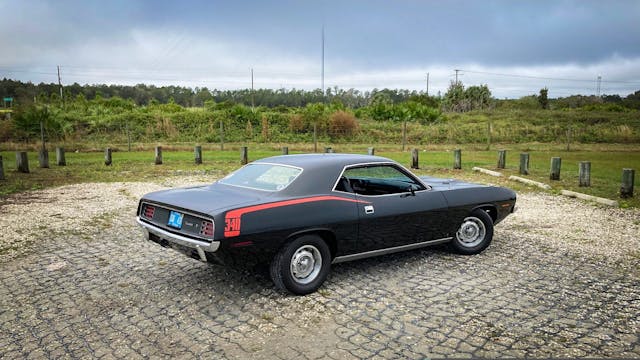
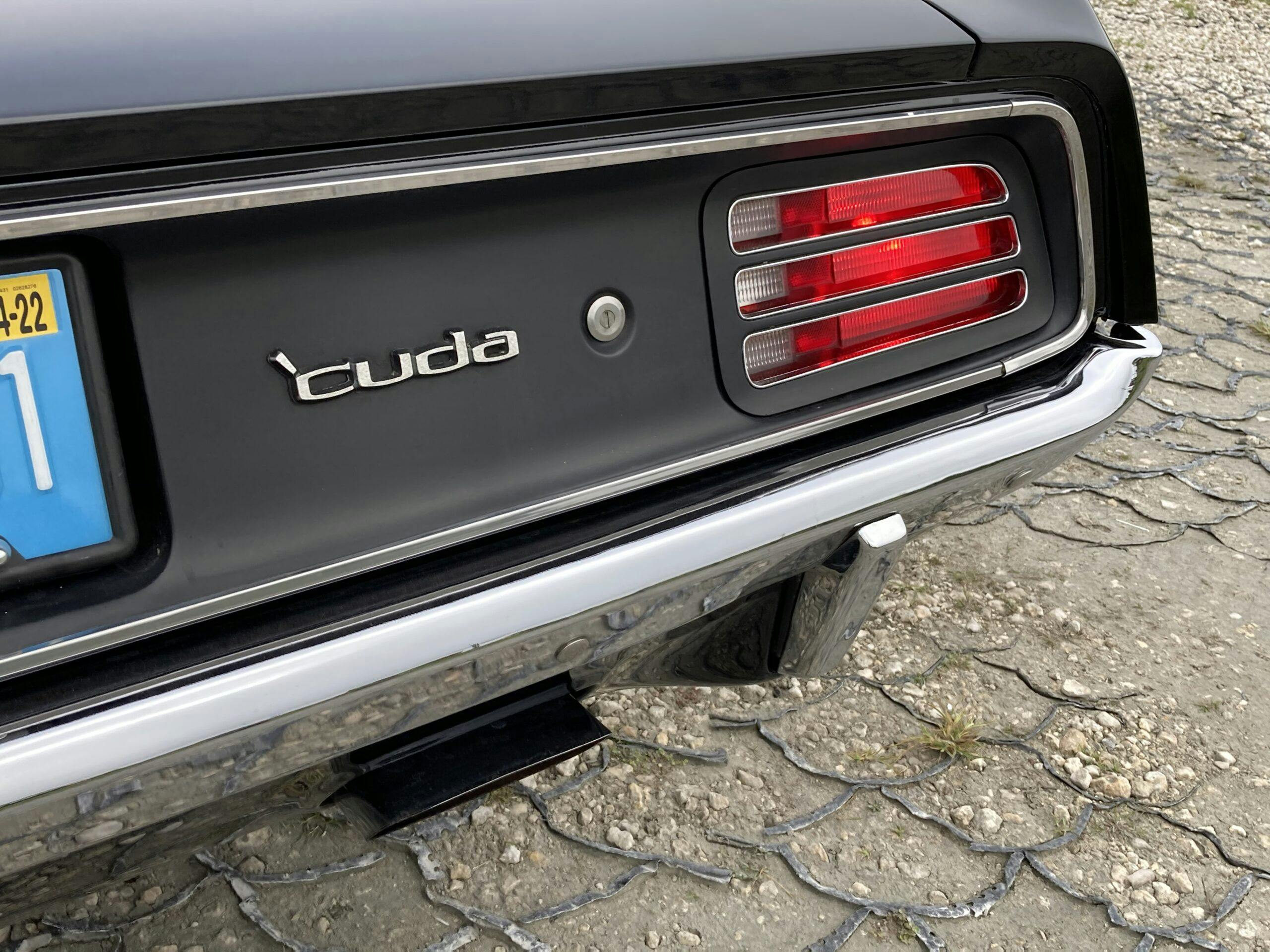

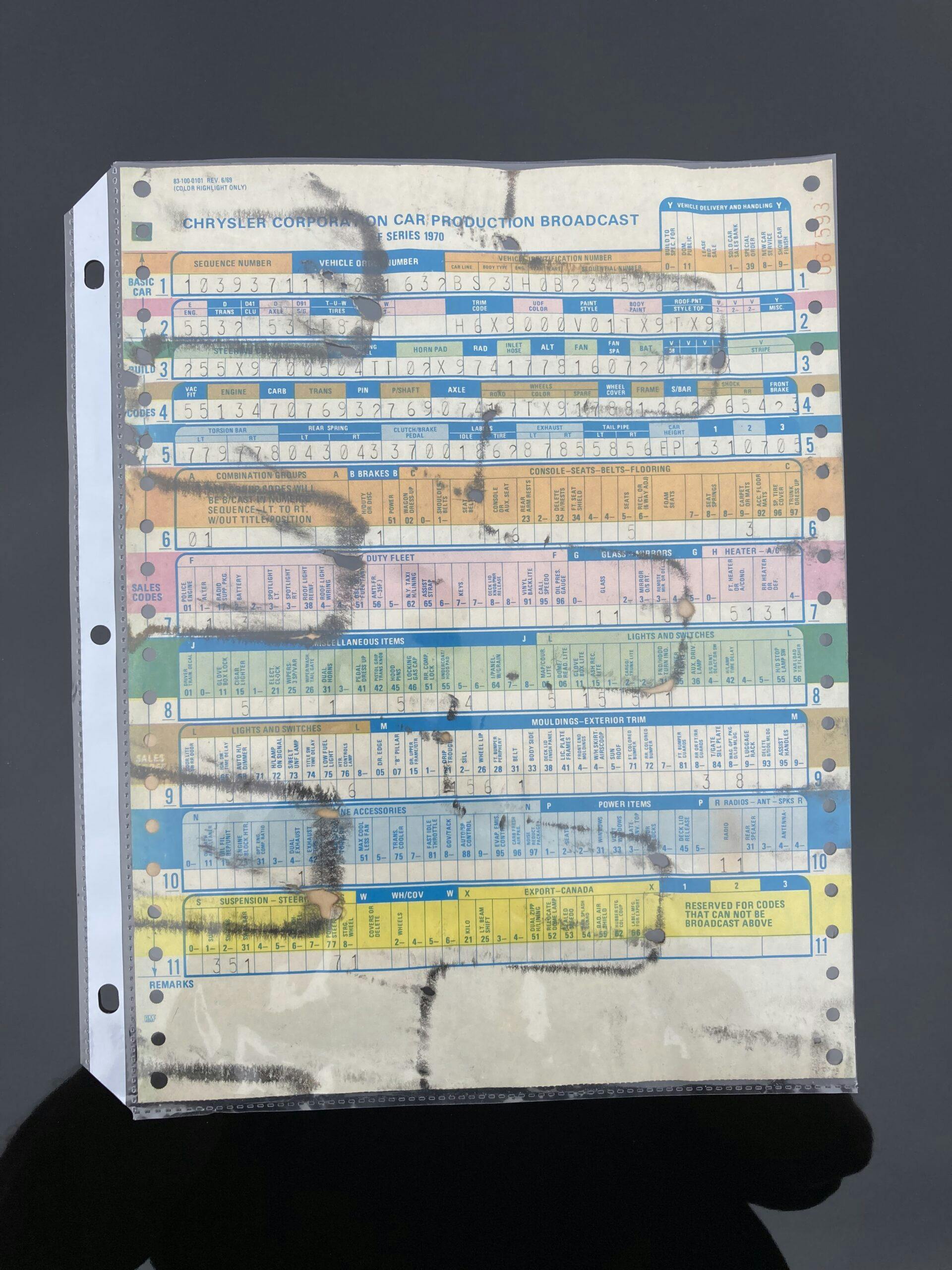
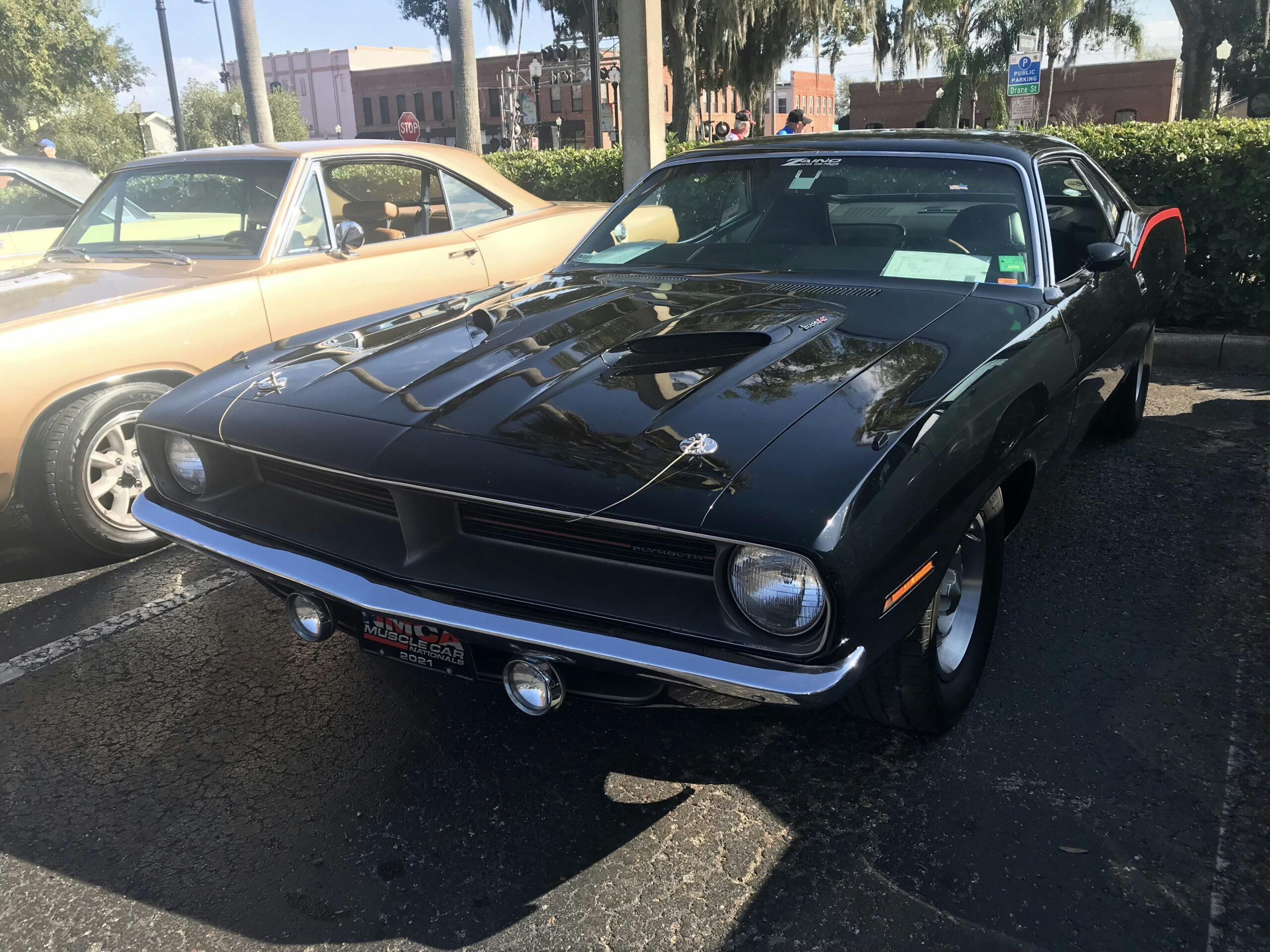
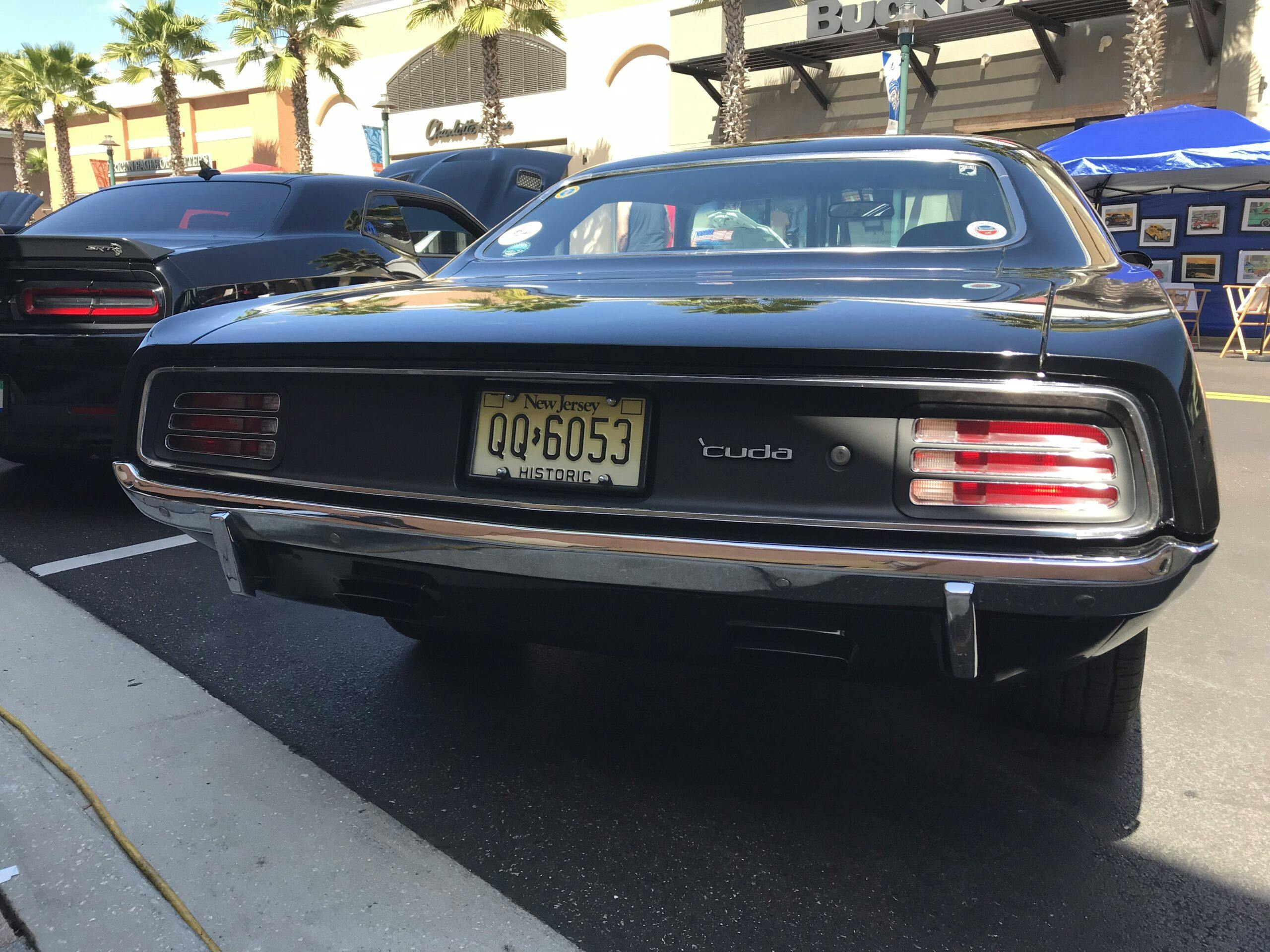


Ray’s Cuda was passed awesome, beautiful and dominating. Extremely gorgeous and Ray very dedicated to ride, family and military service. I’m ex- military served in U.S. Army with 101st Airborne during Desert Storm and Desert Shield in the motor pool, also a New Yorker from the South Bronx an a Mopar fan I owe 1970 Dodge Charger and 1967 chevrolet impala. Read how you kept your Cuda the way you first had, went with 340 over the 383. I seen that 340 in a Duster on a dyno it performed more horsepower that day. On this Memorial Day if you lost friends in Vietnam I raised a beer for them in their honor keep that Mopar rolling.
I wonder if anyone would like to hear about the 1971 Hemi ‘Cuda convertible I bought in 1973 with 4k original miles and used for a daily driver?
In my opinion one of the best looking cars from ANY factory that year. Great that you kept it. Thank you…..
All in all, great story! One edit I would recommend would be to the phrase “383-cubic-inch big-block V-8”. That is very much a Chevy thing, as there is no “small block/big block” in the Mopar ecosystem. The 383 is a “B” engine (not to be confused with the RB), while the 340 is, I believe, in the “LA” family.
Just re-read and see that the author captured the 340 as an LA
No “small block/big block” in the Mopar ecosystem?
Every Mopar guy knows there are small-block and big-block Mopar engines.
https://www.amazon.com/Mopar-Small-Block-Engines-Build-Performance/dp/1613255497/ref=sr_1_2?crid=T5A779QLX8RL&keywords=Small-Block+Mopar&qid=1697685468&s=books&sprefix=small-block+mopar%2Cstripbooks%2C105&sr=1-2
https://www.amazon.com/Big-Block-Mopar-Engines-How-Rebuild/dp/1557881901
Maybe the column should include “My first car that I still have”. Why is original owner so important? Back in the day most people couldn’t afford a new car while in High School or college. I think that there are a lot of great stories to be heard. If you have a great story about your first car that you still have, please share it and I’ll try and get it published. traveler96@gmail.com
Wow, Ray’s story sure took me back. Served in Security at the very same base in 1967. Came home bought a 1968 Maroon Mustang Fastback, 390 4 Speed. Sold it when I started a family. Would have I liked to have kept my pony, you bet, but no regrets. Daughter gave me two lovely granddaughters, the oldest is 18 and a serving in the Marines. Thanks Ray for sharing. Everyone has a story! Lot of muscle cars to choose from during the late sixties…
Ray – Great story, great car – love the way you optioned it for yourself; you obviously were thinking you would keep it long-term.
Jim – LOVE this format! I am excited to hear about the few cars on which you asked owners to send information – hope they do!
Love the Black and the red hockey stick stripe. I have a 72 Barracuda blue with the white stripe I love how these cars drive. So glad you kept it up all these years she is a beauty!
Beautiful car and story!
My ex-husband also bought his 1972 Cuda while stationed in Vietnam. He still owned it at the time of his passing in 2019. His widow just sold it a couple of years ago. I have memories of driving it while we were married especially down the drag strip .
My partner in the mid-70s had chosen the 71 Olds 442 convertible as his ‘exit vehicle’. Copper with the hood stripes. I was its lucky caretaker while he was away working. Beautiul car other than he had chosen an automatic. He and the car have since passed on, but it was my privilege to know and love them both.
This is a awesome site